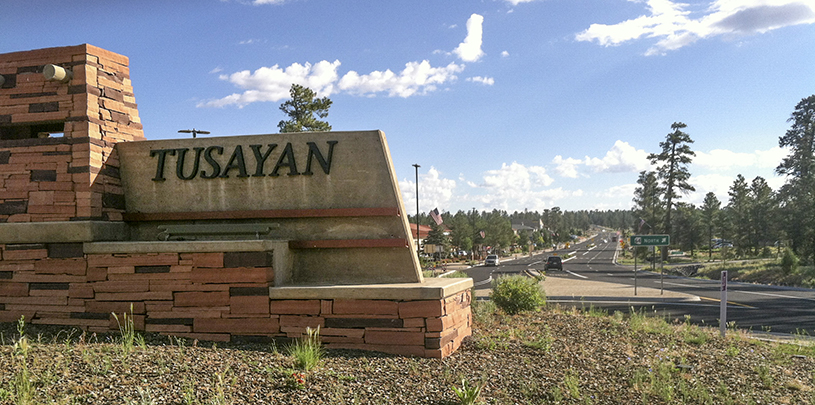
 by Roger Clark, Grand Canyon Director
by Roger Clark, Grand Canyon Director
The U.S. Forest Service decision to reject the town of Tusayan’s application to build a road and utility corridor across public lands that would have paved the way for a massive resort near the south rim of the Grand Canyon is a positive sign of leadership and cooperation.
The mega-resort would have included more than 2,100 housing units and 3 million square feet of commercial space—with hotels, a spa, and a conference center—threatening over-tapped water sources, wildlife habitat, and other natural and cultural resources on adjacent public lands.
When it comes to protecting the crown jewel of American’s national park system, the Forest Service decision is a winner.
“It's very good news," said Grand Canyon National Park Superintendent David Uberuaga. He praised the decision by the Forest Service to deny a permit for the development, which could have placed more than 2,000 housing units roughly a mile from the park's south rim.
Uberuaga added:
I think this is an important decision point for the Forest Service and it protects the park, park resources and tribal lands, and the World Heritage status [of the park]….I’m hopeful that this sends a good message to the public about the importance of protecting the park and other public land managers around the park [who] contribute to that significantly.
Kaibab National Forest Supervisor Heather Provencio deserves high praise from the public as well. As a manager of public lands next to the park, her leadership in making the public interest a priority signals a much-needed change in how government agencies work together to ensure that water, wildlife, sacred areas, and other values that are essential to the Grand Canyon’s integrity are protected.
Her decision affirms the Forest Service’s commitment to take an “all-lands approach” in working with tribes, the National Park Service, and other partners to protect the Grand Canyon region. In this case, she rejected the application because the project, as presented, would not be in the public interest. She added that it would threaten the freshwater drinking system now serving the Grand Canyon, which is “marginally capable” of meeting current needs and would be unable to absorb additional demands tied to the development. Her decision also clearly stipulated that, to be accepted, any future development proposal must fully address potential to harm surrounding public lands.
The decision does not entirely rule out the proposed mega-resort or any other development. The Forest Service simply found that the proposal, as submitted, fails to meet minimum requirements for not interfering “with the use of adjacent” federal lands. Supervisor Provencio’s letter to Tusayan emphasized that any new application would need to demonstrate how the proposal addresses Forest Service concerns and criteria.
Tusayan town manager Eric Duthie said the decision took the community and its development partners by surprise: "The Forest Service made the decision unilaterally…. It’s quite shocking and it's just not fair," he said.
In fact, the Forest Service fulfilled its responsibility to protect the public interest and to consider impacts on the Grand Canyon as a World Heritage Site. The Forest Service received more than 200,000 citizen comments on the proposal, most of them strongly opposed to the development.
Supervisor Provencio chose to reject the application because the development “would stress local and park infrastructure, and have untold impacts to the surrounding tribal and national park lands.”
The Forest Service often asserts discretionary authority to allow access to public lands for all sorts of uses that might ultimately cause irreparable harm to the environment and our public interest. In another decision made nearly a decade ago, the Forest Service permitted widespread exploratory drilling for uranium on the Tusayan District of the Kaibab National Forest without any evaluation of environmental impacts. A federal court subsequently ruled against that potentially harmful use of the Forest Service’s discretionary authority.
Time will tell whether the Tusayan decision signals a larger shift in how public land managers apply discretion in taking a more precautionary approach to protecting the Grand Canyon. They could decide to revisit decades-old decisions that allow uranium mines to threaten Grand Canyon’s watersheds.
As with the Tusayan decision, state and federal agencies should consider shifting the burden of proof to the mining industry to demonstrate that uranium mining will not cause irreparable harm to the Grand Canyon. Together, we can make our public interest a priority on all public lands.
Comments (2)
Leave A Comment